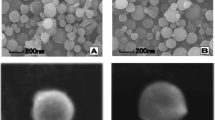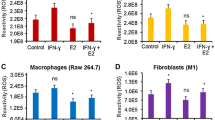Abstract
Previous studies from our laboratory showed that topical application of growth hormone (GH) induced neuroprotection 5 h after spinal cord injury (SCI) in a rat model. Since nanodelivery of drugs exerts superior neuroprotective effects, a possibility exists that nanodelivery of GH will induce long-term neuroprotection after a focal SCI. SCI induces GH deficiency that is coupled with insulin-like growth factor-1 (IGF-1) reduction in the plasma. Thus, an exogenous supplement of GH in SCI may enhance the IGF-1 levels in the cord and induce neuroprotection. In the present investigation, we delivered TiO2-nanowired growth hormone (NWGH) after a longitudinal incision of the right dorsal horn at the T10–11 segments in anesthetized rats and compared the results with normal GH therapy on IGF-1 and GH contents in the plasma and in the cord in relation to blood-spinal cord barrier (BSCB) disruption, edema formation, and neuronal injuries. Our results showed a progressive decline in IGF-1 and GH contents in the plasma and the T9 and T12 segments of the cord 12 and 24 h after SCI. Marked increase in the BSCB breakdown, as revealed by extravasation of Evans blue and radioiodine, was seen at these time points after SCI in association with edema and neuronal injuries. Administration of NWGH markedly enhanced the IGF-1 levels and GH contents in plasma and cord after SCI, whereas normal GH was unable to enhance IGF-1 or GH levels 12 or 24 h after SCI. Interestingly, NWGH was also able to reduce BSCB disruption, edema formation, and neuronal injuries after trauma. On the other hand, normal GH was ineffective on these parameters at all time points examined. Taken together, our results are the first to demonstrate that NWGH is quite effective in enhancing IGF-1 and GH levels in the cord and plasma that may be crucial in reducing pathophysiology of SCI.



Similar content being viewed by others
References
Yılmaz T, Kaptanoğlu E (2015) Current and future medical therapeutic strategies for the functional repair of spinal cord injury. World J Orthop 6(1):42–55. doi:10.5312/wjo.v6.i1.42, eCollection 2015 Jan 18. Review
Estrada V, Müller HW (2014) Spinal cord injury—there is not just one way of treating it. F1000Prime Rep 6:84. doi:10.12703/P6-84, eCollection 2014. Review
Grant RA, Quon JL, Abbed KM (2015) Management of acute traumatic spinal cord injury. Curr Treat Options Neurol 17(2):334. doi:10.1007/s11940-014-0334-1
Sharma HS (2004) Pathophysiology of the blood-spinal cord barrier in traumatic injury. In: Sharma HS, Westman J (eds) The blood-spinal cord and brain barriers in health and disease. Elsevier Academic Press, San Diego, pp 437–518
Sharma HS (2011) Early microvascular reactions and blood-spinal cord barrier disruption are instrumental in pathophysiology of spinal cord injury and repair: novel therapeutic strategies including nanowired drug delivery to enhance neuroprotection. J Neural Transm 118(1):155–176. doi:10.1007/s00702-010-0514-4
Sharma HS (2008) New perspectives for the treatment options in spinal cord injury. Expert Opin Pharmacother 9(16):2773–2800
Sharma HS (2005) Pathophysiology of blood-spinal cord barrier in traumatic injury and repair. Curr Pharm Des 11(11):1353–1389
Sharma A, Sharma HS (2012) Monoclonal antibodies as novel neurotherapeutic agents in CNS injury and repair. Int Rev Neurobiol 102:23–45. doi:10.1016/B978-0-12-386986-9.00002-8, Review
Sharma HS, Patnaik R, Patnaik S, Mohanty S, Sharma A, Vannemreddy P (2007) Antibodies to serotonin attenuate closed head injury induced blood brain barrier disruption and brain pathology. Ann N Y Acad Sci 1122:295–312
Sharma HS, Sharma A (2008) Antibodies as promising novel neuroprotective agents in the central nervous system injuries. Cent Nerv Syst Agents Med Chem 8(3):143–169
Sharma HS (2009) Blood–central nervous system barriers: the gateway to neurodegeneration, neuroprotection and neuroregeneration. In: Lajtha A, Banik N, Ray SK (eds) Handbook of neurochemistry and molecular neurobiology: brain and spinal cord trauma. Springer, Berlin, pp 363–457
Sharma HS (2007) A select combination of neurotrophins enhances neuroprotection and functional recovery following spinal cord injury. Ann N Y Acad Sci 1122:95–111
Sharma HS, Nyberg F, Gordh T, Alm P, Westman J (2000) Neurotrophic factors influence upregulation of constitutive isoform of heme oxygenase and cellular stress response in the spinal cord following trauma. An experimental study using immunohistochemistry in the rat. Amino Acids 19(1):351–361
Sharma HS, Nyberg F, Westman J, Alm P, Gordh T, Lindholm D (1998) Brain derived neurotrophic factor and insulin like growth factor-1 attenuate upregulation of nitric oxide synthase and cell injury following trauma to the spinal cord. An immunohistochemical study in the rat. Amino Acids 14(1–3):121–129
Bauman WA, Spungen AM, Zhong YG, Tsitouras PD (1994) Chronic baclofen therapy improves the blunted growth hormone response to intravenous arginine in subjects with spinal cord injury. J Clin Endocrinol Metab 78(5):1135–1138
Bauman WA, Zhang RL, Spungen AM (2007) Provocative stimulation of growth hormone: a monozygotic twin study discordant for spinal cord injury. J Spinal Cord Med 30(5):467–472
Rouleau P, Ung RV, Lapointe NP, Guertin PA (2007) Hormonal and immunological changes in mice after spinal cord injury. J Neurotrauma 24(2):367–378
Nyberg F, Sharma HS (2000) Repeated topical application of growth hormone attenuates blood-spinal cord barrier permeability and edema formation following spinal cord injury: an experimental study in the rat using Evans blue, ([125])I-sodium and lanthanum tracers. Amino Acids 23(1–3):231–239
Nyberg F, Sharma HS (2004) Growth hormone permeability across the blood-spinal cord and brain barriers and its therapeutic potential in trauma to the spinal cord. In: Sharma HS, Westman J (eds) The blood-spinal cord and brain barriers in health and disease. Elsevier Academic Press, San Diego, pp 519–532
Vaidyanathan S, McCreavy DT, McDicken IW, Soni BM, Mansour P, Wlodarski B, Carron JA, Fraser WD et al (1999) Immunohistochemical study of parathyroid hormone-related protein in vesical transitional epithelium of patients with spinal cord injury. Spinal Cord 37(11):760–764
Hwang DH, Shin HY, Kwon MJ, Choi JY, Ryu BY, Kim BG (2014) Survival of neural stem cell grafts in the lesioned spinal cord is enhanced by a combination of treadmill locomotor training via insulin-like growth factor-1 signaling. J Neurosci 34(38):12788–12800. doi:10.1523/JNEUROSCI.5359-13.2014
Gorgey AS, Gater DR (2012) Insulin growth factors may explain relationship between spasticity and skeletal muscle size in men with spinal cord injury. J Rehabil Res Dev 49(3):373–380
Hung KS, Tsai SH, Lee TC, Lin JW, Chang CK, Chiu WT (2007) Gene transfer of insulin-like growth factor-I providing neuroprotection after spinal cord injury in rats. J Neurosurg Spine 6(1):35–46
Ozdinler PH, Macklis JD (2006) IGF-I specifically enhances axon outgrowth of corticospinal motor neurons. Nat Neurosci 9(11):1371–1381
Tian ZR, Sharma A, Nozari A, Subramaniam R, Lundstedt T, Sharma HS (2012) Nanowired drug delivery to enhance neuroprotection in spinal cord injury. CNS Neurol Disord Drug Targets 11(1):86–95
Sharma HS, Ali S, Tian ZR, Patnaik R, Patnaik S, Lek P, Sharma A, Lundstedt T (2009) Nano-drug delivery and neuroprotection in spinal cord injury. J Nanosci Nanotechnol 9(8):5014–5037
Sharma HS, Ali SF, Dong W, Tian ZR, Patnaik R, Patnaik S, Sharma A, Boman A et al (2007) Drug delivery to the spinal cord tagged with nanowire enhances neuroprotective efficacy and functional recovery following trauma to the rat spinal cord. Ann N Y Acad Sci 1122:197–218
Sharma HS, Sharma A (2012) Nanowired drug delivery for neuroprotection in central nervous system injuries: modulation by environmental temperature, intoxication of nanoparticles, and comorbidity factors. Wiley Interdiscip Rev Nanomed Nanobiotechnol 4(2):184–203
Sharma HS, Sharma A (2013) New perspectives of nanoneuroprotection, nanoneuropharmacology and nanoneurotoxicity: modulatory role of amino acid neurotransmitters, stress, trauma, and co-morbidity factors in nanomedicine. Amino Acids 45(5):1055–1071. doi:10.1007/s00726-013-1584-z
Menon PK, Muresanu DF, Sharma A, Mössler H, Sharma HS (2012) Cerebrolysin, a mixture of neurotrophic factors induces marked neuroprotection in spinal cord injury following intoxication of engineered nanoparticles from metals. CNS Neurol Disord Drug Targets 11(1):40–49
(2011) Committee for the update of the guide for the care and use of laboratory animals, 8th edn. Washington DC, The National Academic Press. http://www.nap.edu
Sharma HS, Sharma A (2012) Rodent spinal cord injury model and application of neurotrophic factors for neuroprotection. Methods Mol Biol 846:393–415
Sharma HS, Olsson Y (1990) Edema formation and cellular alterations following spinal cord injury in rat and their modification with p-chlorophenylalanine. Acta Neuropathol (Berlin) 79:604–610
Mustafa A, Sharma HS, Olsson Y, Gordh T, Thoren P, Sjoquist PO, Roos P, Adem A et al (1995) Vascular permeability to growth hormone in the rat central nervous system after focal spinal cord injury. Influence of a new anti-oxidant H 290/51 and age. Neurosci Res 23(2):185–194
Blum WF, Ranke MB, Bierich JR (1988) A specific radioimmunoassay for insulin-like growth factor II: the interference of IGF binding proteins can be blocked by excess IGF-I. Acta Endocrinol (Copenh) 118:374–380
Wilson EM, Oh Y, Rosenfeld RG (1997) Generation and characterization of an IGFBP-7 antibody: identification of 31 kD IGFBP-7 in human biological fluids and Hs578T human breast cancer conditioned media. J Clin Endocrinol Metab 82(4):1301–1303
Elliott KA, Jasper HH (1949) Measurement of experimentally induced brain swelling and shrinkage. Am J Physiol 157(1):122–129
(2012) Efficacy and safety of growth hormone treatment in spinal cord injury (GHSCI). http://clinicaltrials.gov/show/NCT01329757. Accessed 23 Jul 2014
Acknowledgments
This investigation is supported by grants from the Air Force Office of Scientific Research (EOARD, London, UK), and Air Force Material Command, USAF, under grant number FA8655-05-1-3065; Swedish Medical Research Council (Nr 2710-HSS), Swedish Strategic Research Foundation, Stockholm, Sweden; Göran Gustafsson Foundation, Stockholm, Sweden (HSS), Astra Zeneca, Mölndal, Sweden (HSS/AS); The Foundation of the Society for the Study of Neuroprotection and Neuroplasticity, Romania; The Foundation of the Society for the Study of Nanoneurosciences and Neuroregeneration, Romania; The University Grants Commission, New Delhi, India (HSS/AS); Ministry of Science & Technology, Govt. of India & Govt. of Sweden (HSS/AS); Indian Medical Research Council, New Delhi, India (HSS/AS); India-EU Research Co-operation Program (RP/AS/HSS) and IT 794/13 (JVL); Government of Basque Country and UFI 11/32 (JVL); and University of Basque Country, Spain.
Author information
Authors and Affiliations
Corresponding author
Rights and permissions
About this article
Cite this article
Muresanu, D.F., Sharma, A., Lafuente, J.V. et al. Nanowired Delivery of Growth Hormone Attenuates Pathophysiology of Spinal Cord Injury and Enhances Insulin-Like Growth Factor-1 Concentration in the Plasma and the Spinal Cord. Mol Neurobiol 52, 837–845 (2015). https://doi.org/10.1007/s12035-015-9298-8
Received:
Published:
Issue Date:
DOI: https://doi.org/10.1007/s12035-015-9298-8




